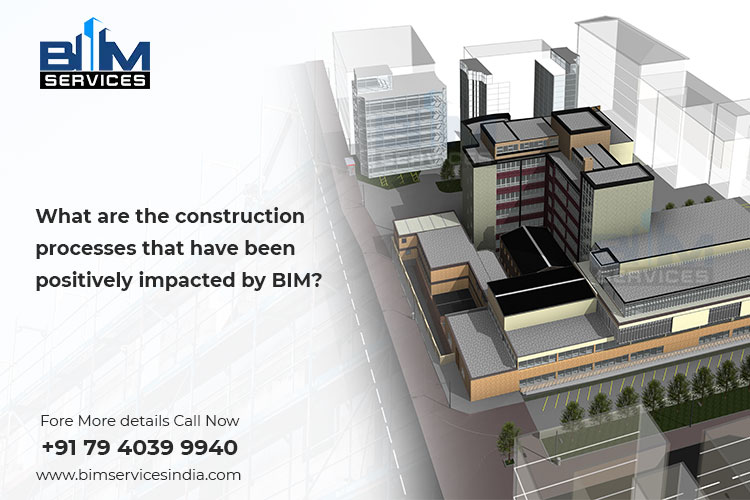What are the processes that have been positively impacted by BIM?

Building Information Modeling has been revolutionary for the construction industry. Its advantages can be observed throughout the project as well as building’s lifecycle. It connects teams, augments workflow, provides greater visibility, aids prefabrication and facilitates better decision making during the planning, designing and onsite construction. Its gains however don’t end once the building has been constructed. The intelligent 3D model also provides benefits during renovation, refurbishment and management of facilities.
In the current article we look at the four processes in the AEC sector that have been positively impacted by BIM.
Table of Contents
Design Coordination:
Whether it is large scale or small scale construction, clashes are imminent. They can be hard clashes or soft clashes which require complete redesigning and leads to waste of time, resources and money. Hence it is integral to discover them before the construction begins. BIM Coordination Services ensures that any overlapping or interfering elements are detected in the preconstruction stage itself. Similarly, with Navisworks it is possible to detect clashes of a given tolerance value and above so that they don’t adversely impact construction timeline and cost. Finally, with enhanced collaboration various stakeholders like architects, engineers, designers etc. can communicate better and stay on the same page. This also significantly reduces design errors that arise out of miscommunication and misunderstanding.
Prefabrication:
Prefabrication refers to the process in which building or building components are constructed offsite in a climate controlled warehouse location and then assembled and installed onsite. Owing to its various advantages like increased speed, better quality and cost, sustainability etc. prefabrication has become very prominent today. However, here accuracy is of utmost importance because any errors in dimensions, sizes could cause the component to not fit properly on site. This could either mean that the resources are wasted and the whole component or a range of components need to be prefabricated again. Or it would mean that their dimensions need to be altered. Both the scenarios would lead to loss of time and money. However, with MEP BIM and Steel Detailing Services it is possible to extract accurate shop and fabrication drawings from the data-rich 3D model. This provides all the details that are necessary to ensure error free prefabrication of MEP or steel components. They also provide the ground workers information about assembly and installation of these components.
Renovation:
Point Cloud to BIM has streamlined the renovation, refurbishment and restoration process considerably. By laser scanning the existing building and structure and then using the point cloud data to create BIM models it is possible to get accurate information about the building or the structure as is conditions. This allows the architects, engineers and designers to properly plan their renovation project. Conventional BIM deliverables like enhanced collaboration, 3D visualization, faster design development, cost estimation and quantity take-offs, clash detection etc. all adds to the advantages offered by Scan to BIM.
Facility Management:
One of main advantages of BIM is its ability to embed all the information that would be required throughout the project lifecycle in a single 3D model. The changes made during the onsite construction could be made in the BIM model used for construction to create as-built BIM model. The as-built BIM model has great value for facility managers. It provides them with all the information that they would need like location of components, the manufacturers details, the material specifications etc. in order to carry out repairs, proper maintenance, track upgrades etc. It can also be used for space management and achieving energy efficiency. When all the documentation and information required are present in one place it makes the task of facility manager easy and more effective.
Conclusion
The scope and the application of Building Information Modeling are quite broad. BIM is also constantly evolving based on the requirements and problems that are facing the construction industry. It aims to provide them with all the tools they would need to pave a path towards greater efficiency.